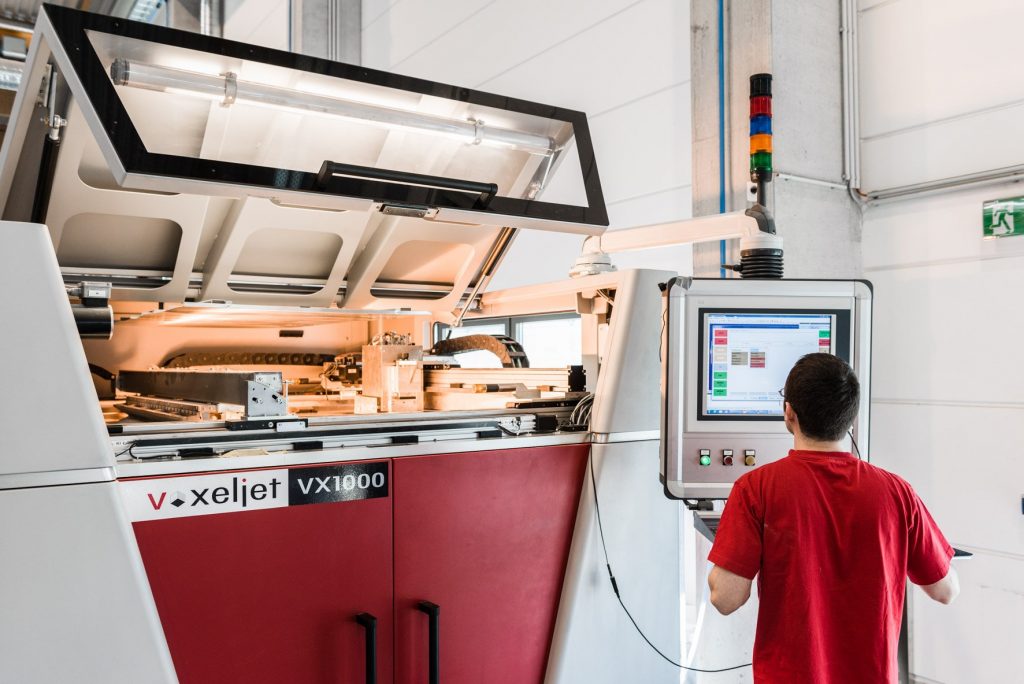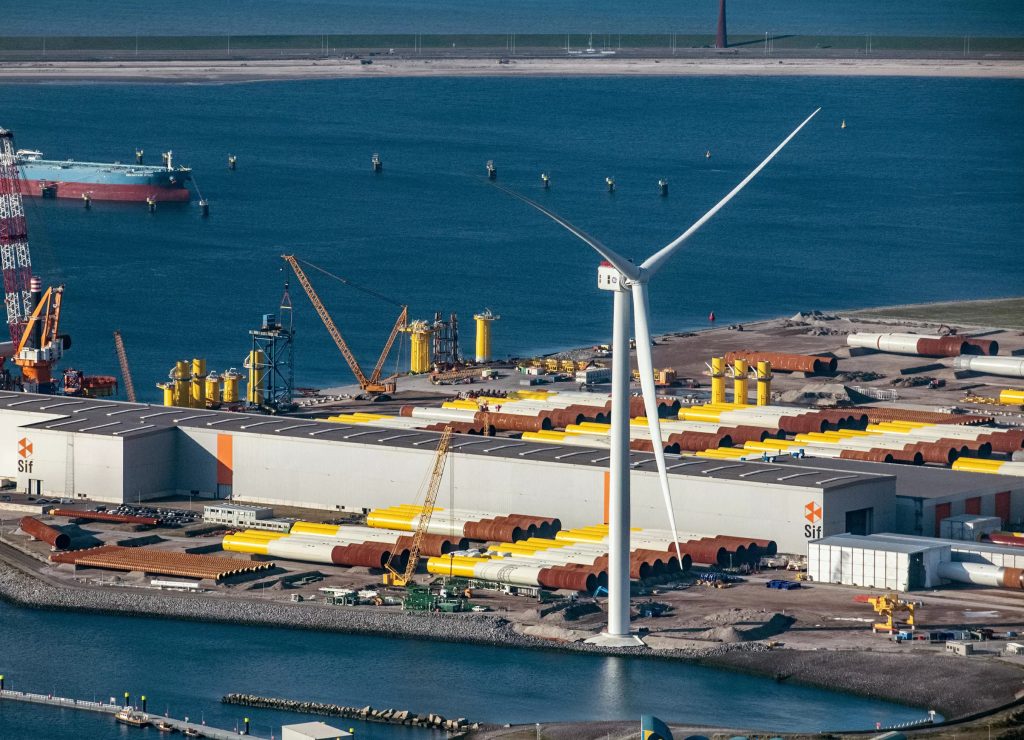Voting for the 2021 3D Printing Industry Awards is now open. Who do you think should receive top honors this year? Have your say now.
German research institute Fraunhofer IGCV and binder jet system manufacturer voxeljet have announced that they intend to develop the largest wind turbine 3D printer to date.
Known as the ‘Advance Casting Cell’ or ‘ACC,’ the new system is specifically being built to print the molds needed to cast parts for GE’s Haliade-X turbine, which can weigh up to 60 tons each. Once it enters initial trials in 2022, voxeljet says that the machine is expected to reduce mold lead times by 80%, and by producing them on-site rather than shipping them in, it’s set to cut their carbon footprint as well.
“The 3D printed molds will bring many benefits including improved casting quality through improved surface finish, part accuracy and consistency,” explains Juan Pablo Cilia, Senior Additive Design Engineer at GE Renewable Energy. “Furthermore, sand binder jet molds or additive molds provide cost savings, by reducing machining time and other material costs due to optimized design.”
“This unprecedented production technology will be a game-changer for production efficiency, allowing localized manufacturing in high-cost countries.”
Binder jetting at scale
Voxeljet’s High Speed Sintering (HSS) binder jetting technology effectively involves the deposition of powders covered in binders, which are then heated by an infrared emitter into layers. The company markets the process as a direct alternative to HP’s Multi Jet Fusion approach, but it also faces competition from ExOne and Desktop Metal, which recently agreed to merge in a $575 million deal.
In terms of voxeljet’s offering, it revolves around its HSS-equipped machines, including the VX200 and VX1000, as well as the more industrial VX1300X, VX2000 and VX4000. Thanks to their colossal build volumes, which have capacities as large as 4,000 x 2,000 x 1,000 mm, these systems have often addressed printed mold and cast applications, at a significant level of both complexity and scale.
In the past, the company has reported the VX4000 being used to erect a four-meter piece of artwork, and create formwork which enabled the construction of a 78m2 ceiling. Working with GE and Fraunhofer IGCV, voxeljet is now seeking to deploy its large-format manufacturing expertise, to integrate its technologies into a huge new system, that’s capable of creating wind turbine molds on an unprecedented scale.

Optimized energy generation
Backed by the German Federal Ministry for Economic Affairs and Energy, the ACC project will see the R&D of a new, large-format printer, capable of creating sand molds for casting complex metal parts. Based around voxeljet’s proprietary binder jet technology, the firm says that the modular machine is being built to print molds for castings that measure up to 9.5m in diameter, and weigh “60 tons or more.”
For its part in the project, Fraunhofer IGCV is set to lead the investigation and resolution of any casting, process monitoring or material issues that arise. The institute will also manage the thermal performance of parts during casting, in a way that ensures they use the optimal amount of material, as well as seeking out new approaches to process supervision.
“We aim to optimize the mold printing to avoid extremely costly misprints or even miscasts, to save on binder and activator, and to improve mechanical and thermal behavior during casting,” said Fraunhofer IGCV’s Wolfram Volk. “By developing a process that conserves resources as much as possible, we want to help to improve the environmental and cost balance in the manufacture of wind turbines.”
Having 3D printed a test mold for GE in 2019, in which they were able to condense dozens of parts into an single component, the team now anticipates making similar functionality gains as well as reducing their material consumption, in a way that voxeljet’s Christian Traeger says could unlock “optimization that makes completely new casting designs possible.”
When initial trials start during Q1 2022, the company’s CEO Ingo Ederer also believes that the project will allow GE to reap the business benefits of adopting 3D printing to its “fullest capacity.” “Given the demand for offshore wind turbines, it will help a lot to fulfill project schedules and high market demands,” he added. “We are therefore very excited to be part of this groundbreaking project.”

3D printing turbine elements
According to the International Energy Agency, global offshore wind energy will become a $1 trillion industry by 2040, thanks in part, to a reduction in costs such as that being achieved with the Haliade-X. 3D printing, in particular, is becoming an increasingly popular means of making these efficiency gains, and GE Research was also awarded a contract earlier this year, to 3D print turbine blade tips for testing.
Likewise, the University of Maine has been awarded $2.8 million by the U.S. Department of Energy to develop a more eco-friendly method of 3D printing turbine blade molds. Using a bio-based feedstock and their Cellulose Nanofiber (CNF) printing process, the UMaine team believe it’s possible to cut the costs of producing such large-format parts by up to 50%.
Elsewhere, computational materials design specialist QuesTek Innovations has gained $1.2 million in funding to develop new niobium-based alloys for 3D printing turbine blades. Designed to achieve fuel efficiency at high temperatures, it’s hoped that the material will have applications within the energy and aerospace sectors.
To stay up to date with the latest 3D printing news, don’t forget to subscribe to the 3D Printing Industry newsletter or follow us on Twitter or liking our page on Facebook.
For a deeper dive into additive manufacturing, you can now subscribe to our Youtube channel, featuring discussion, debriefs, and shots of 3D printing in-action.
Are you looking for a job in the additive manufacturing industry? Visit 3D Printing Jobs for a selection of roles in the industry.
Featured image shows GE’s Haliade-X offshore wind turbine in Rotterdam port, the Netherlands. Photo via GE.



